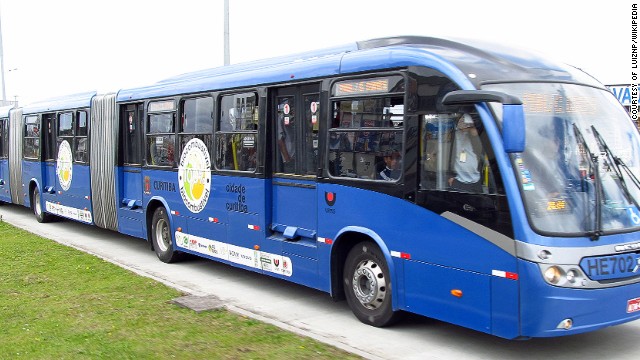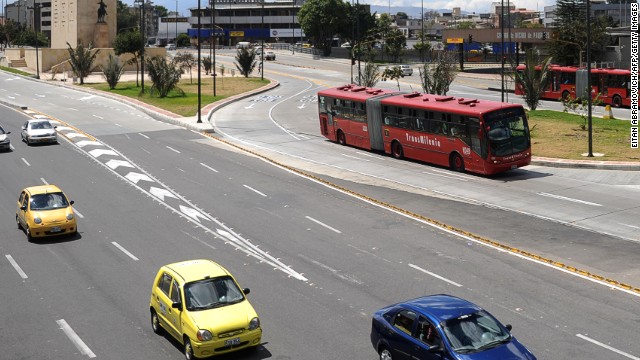Brazil's idea for future mobility: the good old bus
September 22, 2014 -- Updated 1554 GMT (2354 HKT)
Editor's note: Future
Cities offers an inside look at the rapid evolution of urban spaces,
exploring new ideas, new technologies and new design concepts that might
impact urban life throughout the world.
.
(CNN) -- Autonomous vehicles, levitating trains and
supersonic tubes have all been suggested as radical ways to transport us
faster as the new urban age approaches, but it seems the real secret to
a faster commute has been with us all along -- the bus..
Bus rapid transit (BRT)
systems are paving the way for sustainable, efficient, and affordable
travel and now operate in 181 cities worldwide. But they're not just
your regular bus service. Exclusive bus lanes dominate the center of
roads, prepaid tickets prevent delays when boarding and raised platforms
at bus stops make you level with the bus floor to get on..
.
These small details all
make for a smooth, slick service to help you reach your destination in
record time and its nothing new, the first system was pioneered 40 years
ago.
 BRTs from the world: click to view
BRTs from the world: click to view
The Rede Integrada de
Transporte (RIT) in the town of Curitiba, Brazil began service in 1974.
Industrial growth saw the city's population grow by 5.3% per year in the
1970's and this rapid influx of new people living and working in the
city called for new urban design and led to this innovative use of buses
in their own infrastructure by the mayor and architect Jaime Lerner.
.
His design of a 'subway
on wheels' transported 50,000 people daily back in the 80s and today
sees over 2 million passengers step on board each day. Six circular
routes radiate around the city in both directions and in dedicated
lanes, enabling frequent services. Colour-coding of buses also makes it
easier to know if you;re on the right track.
.
This bus-based
infrastructure is significantly cheaper to build than going underground
like the metro systems seen in other cities such as London and New York.
We have to convert a new public and how? Mainly with speed.
Gustav Fruet, Mayor of Curitiba.
Gustav Fruet, Mayor of Curitiba.
Thirty-three cities in
Brazil now host a BRT, as well as a further 26 across the rest of Latin
America. The continent is setting the example for the field but has its
own social challenges to overcome with its users.
.
One of the main goals of
these systems is to remove the social snobbery associated with taking
the bus by offering a faster service that people can't refuse. This was
accomplished in Curitiba when the buses first appeared but new
high-income earners are offering resistance.
.
Curitiba has one of
Brazil's highest per capita ownership of private cars. The city's mayor
Gustav Fruet is concerned he must convert a new generation.
"Cars are so accessible
and relatively accessible," says Fruet. "We have to convert a new public
and how? Mainly with speed". The lure is still faster travel but also
convenience, with bus stops every 400 meters.
.
But as with every
growing city, populations begin to live further and further away from
its epicenter. Human rights activist Luana Xavier Pinto feels the system
no longer accommodates the working class who can no longer afford to
live in the city and therefore within easy access to the BRT.
"They have been pushed
to the metropolitan region where you don't have good integration with
the system...they have to take longer and longer trips to get to work,"
says Pinto. The city has tried to overcome this with bigger, longer
buses which encompass three buses in one.
.
The result is a
high-capacity bus capable of carrying 250 passengers at once -- as many
as a Boeing 787. The priority now it to get people on board.
The tried and tested
technology of Curitiba has proven successful and the city has long been
known as a laboratory for sustainability. So as the future approaches
with daydreams of jetpacks and hovercrafts, the reality for us all may
be not to miss the bus.
Read more from Future Cities:


No comments:
Post a Comment